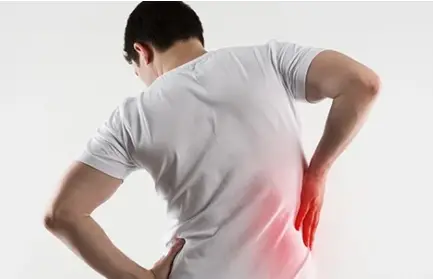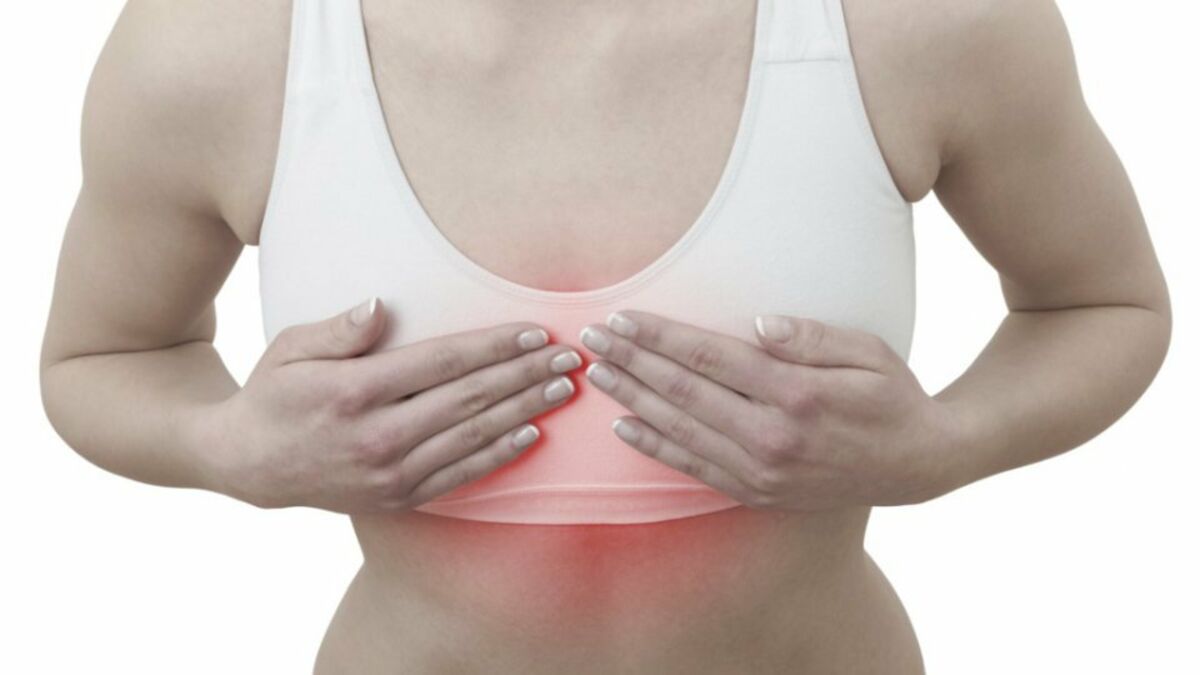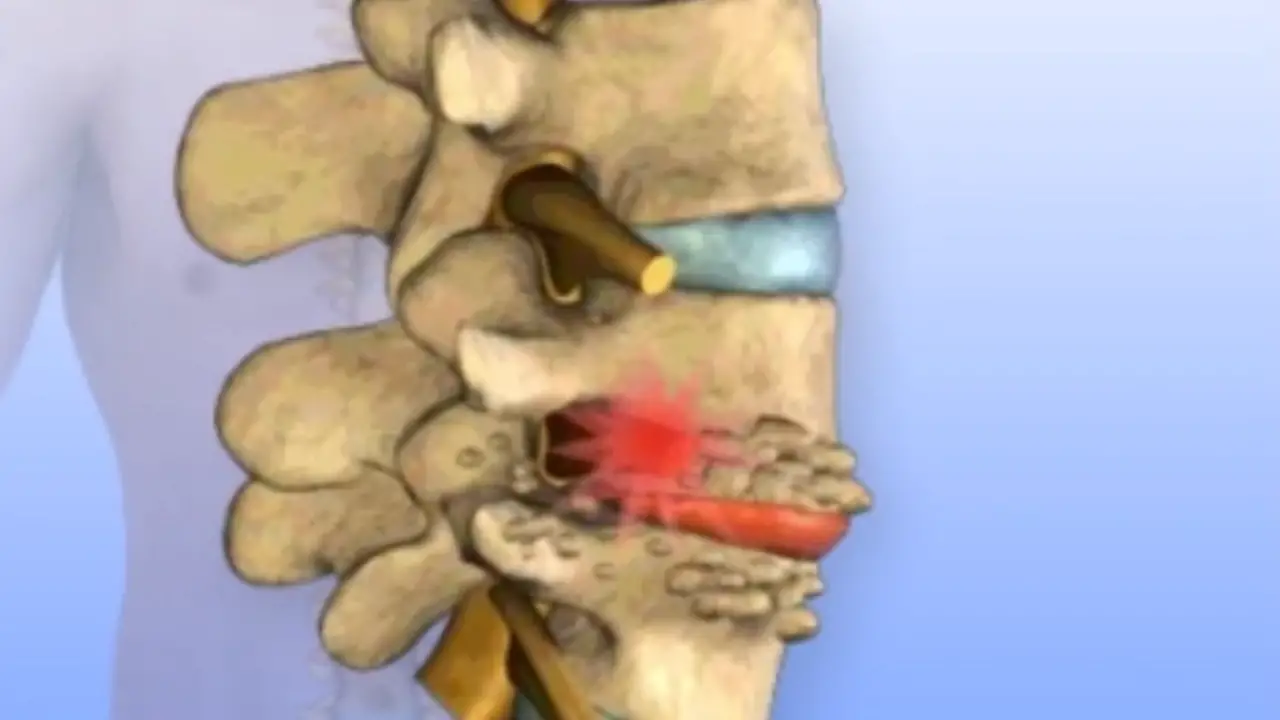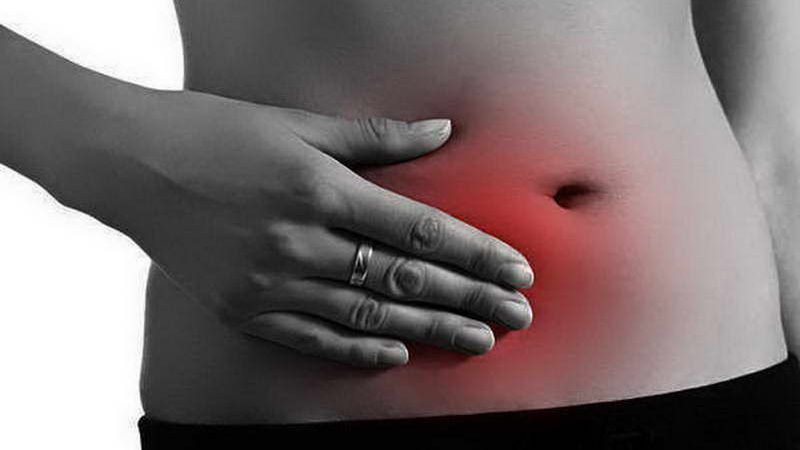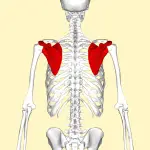Flank pain is a fairly common symptom observed in medicine. Depending on the precise point of localization of pain, certain organs may be affected, and the specialist may suspect a pathology.
What are the possible causes of flank pain, depending on whether the pain is located in the left or right flank? This article will address all the questions you have about this symptom by trying to provide some clarification. He will also discuss what to do in the presence of flank pain.
Anatomy
The abdomen is classically divided into 9 parts: the hypochondria right and left, theepigastrium, flanks right and left (or lumbar regions), The periumbilical region, iliac fossa right and left and the suprapubic region or hypogastrium.
A pain in the flank is therefore a pain located in the middle of the belly, to the right or to the left of the navel. The other parts of the abdomen are:
- The hypochondrium (right and left) that lie immediately below the ribs
- THEepigastrium is located between the sternum and the navel
- La periumbilical region is the part in the middle of the right flank and the left flank around the navel
- The iliac fossa (right and left) are located in the lower abdomen on either side of the pubis
- THEhypogastrium is located between the pubis and the navel in the middle of the 2 iliac fossae.
Possible causes of flank pain
Left flank pain
Pain in the left flank is often related to the organs located there. These are the pancreas, intestines, part of the stomach, spleen, kidneys, ovaries.
Stomach : if this organ is affected by a pathology, the patient may feel pain in his left flank. It can be a less serious problem like a gastric ulcer (1) or gastritis (2). These pains can also evoke more serious pathologies such as stomach cancer (3) or a hiatal hernia (4)
The intestines : when the intestines are affected, pain in the left flank can highlight the following diseases: an obstruction or bowel obstruction (5) diverticulosis or an diverticulitis (6) Crohn's disease (7) colon cancer (8), etc It could just as well be intestinal gas or Constipation (9)
The pancreas : The acute pancreatitis (10) is the main pathology to be feared in case of left flank pain related to the pancreas. In this case, other signs are associated such as vomiting, palpitations and fever.
The spleen : Normally the spleen is not palpated in the left flank. But in a pathological state where its volume is increased (splenomegaly [11]), it is found in the left flank and its palpation can be painful.
The ovaries : A woman who suffers from ovarian cysts (12) will feel pain in the left flank when the left ovary is affected.
Kidneys : the presence of kidney stones (13) causes severe pain in the left flank radiating into the back. This type of pain is called renal colic. It is also common to see patients presenting with hydronephrosis (14) kidney cancer (15) or any other kidney problem that manifests as pain in the left lumbar region.
Right flank pain
Right flank pain generally affects the organs located in this region such as: the colon (large intestine), the gallbladder and the bile ducts, the kidney, the pancreas. The most common cause of right flank pain is cholelithiasis (16)
Cholelithiasis is the presence of stones in the bile ducts slowing down or blocking the passage of bile. The bile is a physiological liquid which consists in facilitating the digestion of certain foods by the liver. It is stored in the gall bladder before flowing into the intestines to be excreted. It can happen that the cholesterol contained in the bile forms small crystals called gallstones or cholelithiasis.
The inflammation of the wall of the gallbladder by these stones, more or less associated with an infection of the bile, leads to another painful picture called acute lithiasic cholecystitis (17). The flank can then be very painful accompanied by other signs such as: nausea, vomiting, abdominal defense.
Pain in the right flank can also suggest a kidney stone, an infection of the kidney and ureter called pyelonephritis (18)
It is also possible that pain at this level is due to a intestinal hernia (19), a Constipation or an bowel obstruction as the case on the left. Similarly, in women we can think of ovarian cysts, to one ectopic pregnancy (20) or a ovarian cancer (21)
Finally, pain in the right flank can be a mild form ofappendicitis (22). A careful examination by the doctor as well as additional assessments will confirm the diagnosis.
Referred pain
Some pain felt in the left or right side of the stomach can come from other parts of the body such as the dorsal spine. We are therefore talking about referred pain due to nerve root irritation (radiculopathy) coming out on either side of the dorsal spine, thus innervating regions near the flanks. Several causes are at the origin, in particular the rheumatological pathologies (23) and minor intervertebral disorders (24)
To learn more about referred pain (also called referred pain), see the following article.
Parietal and muscle pain
They can also cause flank pain. For instance :
- a conflict of the anterior branch of the abdominal cutaneous nerve (25)
- Myofascial syndromes (26) concerning contractures of the psoas muscles and transverse and oblique abs. These contractures can come from a bad posture, from a disorder of the spinal statics or be due to the practice of sport.
What to do in the face of flank pain?
In front of a patient who complains of pain in the flank, the health professional will have to do a good interrogation. Sometimes the answers given by the patient are not precise enough to guide the specialist in the right direction.
He will continue with a clinical examination to look for other associated physical signs. Depending on this examination, the doctor will request additional assessments to better guide his diagnosis.
There are several possible analyzes depending on the pathology suspected by the doctor. Indeed, he may request an X-ray of theabdomen without preparation for exploration of the colon. This will allow him to confirm a Constipation or an bowel obstruction.
THEscan as for it, it is the examination of first choice when the doctor wants to look for a pathology affecting the following organs: ovaries, pancreas, spleen, kidneys, gallbladder.
If the pain is accompanied by fever and other digestive symptoms, a biological assessment may be requested in order to analyze the blood, stools, urine, etc. For example, thecytobacterioligical urine exam is done to look for a urinary tract infection.
If the doctor suspects the presence of stones or tumors, he may order a abdominal scan. A Magnetic resonance imaging (IRM) may be requested in case the doctor wishes to explore the abdominal cavity in more detail.
The treatment of flank pain goes through the treatment of the pathology in question. The pain may be relieved by antispasmodics and laxatives if it is pain related to digestive transit (constipation and others). In the case of renal colic, it will be managed by nonsteroidal anti-inflammatory drugs.
If the cause of the pain is muscular, the goal will be to relax the tense musculature in order to relieve the symptoms. Modalities such as massage may be relevant. It is even possible to relax the trunk muscles independently using tools such as a massage gun, massage roller or an heated lumbar belt.
- MASSAGE GUN DEEP TISSUE - ALDOM muscle massage gun for athletes is ideal for relieving muscle pain, aches and stiffness, promoting blood circulation and helping to speed up warm-up and recovery. It also helps restore the body faster and can be used as your percussion massager at the gym or sports club, is held with one hand and has a comfortable handle.
- 6 MASSAGE HEADS + 30 SPEED - The deep tissue massage gun comes with 6 different massage heads to help relieve sore muscles, 30 adjustable speed modes, Choose the speed and massage heads that best suits your needs. your needs (1 to 800 pulses per minute) to target different body parts and muscle groups, Integrate a percussive massage experience. Reduce muscle recovery time.
- SUPER QUIET AND POWERFUL MASSAGE GUN - Professional handheld percussion massager. Featuring a powerful, high-penetration motor, the deep tissue massager is designed to send waves of relaxation and relief throughout the body, and increase everyday mobility and flexibility with percussive therapy for pain relief joints and muscle pain and prolongs the duration of muscle massage
Last updated on 2024-04-24 / Affiliate links / Images from the Amazon Partners API
- 【6 in 1 Massage Kit】The muscle roller set includes 1*foam roller, 1*massage roller stick, 1*massage ball, 1*resistance band, 1*figure 8 exercise band, 1 * product manual and 1 storage bag. You will treat yourself to a full body massage – from neck to toes. 12 months warranty, so please feel free to contact us if you have any questions, we will do our best to satisfy our customers.
- 【Effective Tension Relief】Use this foam roller set before workout to stretch muscles and prevent muscle injury. You can also activate muscles to enhance exercise effects during exercise. It is also suitable for stretching and balance exercises. Use for 20-30 minutes daily to relieve tight, stiff muscles and relieve tension.
- 【Excellent Elasticity and Durability】The muscle roller set is made of eco-friendly EVA material which has excellent durability, water resistance and elasticity, and is not easily deformed. The foam roller with protrusions is gentle on the body and gives an acupressure feeling. No smell, no harm to the body, no sweat. You can wash it directly with water.
Last updated on 2024-04-24 / Affiliate links / Images from the Amazon Partners API
- 🔥BODY WARMING – The heating pillow lumbar consists of a built-in heating pad that heats up quickly to provide warmth to treat symptoms, menstrual cramps and stomach ailments, arthritis, leg pain and more.
- 🔥Vibration Massage - The back massager is integrated with 4 powerful massage motors to deliver a soothing vibrating massage. It helps reduce tension and strain in the neck and shoulders, lower back, lumbar region, thighs and legs.
- 🔥Customizable massage - This back pain wrap has 3 massage modes, 2 adjustable vibration intensities and 2 heating levels. Allows you to customize a setting for yourself to achieve the ultimate comfort. The heating pad is equipped with overheat protection and automatic shut-off functions to ensure safe use.
Last updated on 2024-04-25 / Affiliate links / Images from the Amazon Partners API
In extreme cases, the treatment can also go through a surgical intervention for many pathologies (kidney stone, cholelithiasis, intestinal obstruction, appendicitis, tumors, etc.). We must never forget the importance of rest in the management of flank pain.
What about natural remedies?
Although they are not supported by solid scientific evidence, several natural products and home remedies are used to treat various body pains, especially for their anti-inflammatory power.
Here is a non-exhaustive list of plants and essential oils that are effective in controlling pain and inflammation:
- Turmeric : Thanks to its antioxidant and anti-inflammatory powers very powerful, turmeric is one of the most used plants in a culinary and therapeutic context. The composition of turmeric is essentially made of essential oils, vitamins (B1, B2, B6, C, E, K) and trace elements. But it is to its composition rich in curcumin and curcuminoids that we owe them and calm skin of this spice.
- REASON TO CHOOSE OUR TURMERIC CAPSULES WITH GINGER AND BLACK PEPPER – Our complex turmeric…
- POWERFUL TURMERIC CAPSULES - Turmeric is an excellent source of Vitamin C, antioxidants,…
- IDEAL AND PRACTICAL FORMULA – The powders we use are delicately harvested,…
Last updated on 2024-04-24 / Affiliate links / Images from the Amazon Partners API
- Ginger : In addition to the special flavor it brings to the kitchen and its aphrodisiac properties, ginger is a root well known for its anti-inflammatory powers. THE gingerol gives it its anti-inflammatory action. It is an active component acting on the inflammatory pain related to chronic joint inflammatory diseases, including rheumatoid arthritis, lupus, rheumatic diseases, etc. It has been proven that this active element is also effective in acting on the inflammation linked to arthritis and sciatica. Ginger also has other benefits thanks to its high potassium content and its richness in trace elements (calcium, magnesium, phosphorus, sodium) and vitamins (provitamin and vitamin B9).
- 【Natural Ginger Foot Patches】: Natural Foot Detox Patch with Ginger and…
- 【Ginger Anti Swelling Detox Patch】: Ginger Detox Patches are natural,…
- 【Removes Body Toxins】: Ginger Foot Patches helps reduce the buildup of…
Last updated on 2024-04-24 / Affiliate links / Images from the Amazon Partners API
- Omega-3s : Omega-3 are polyunsaturated fatty acids that play a very important role in the functioning of our body. They are provided by food in three natural forms: docosahexaenoic acid (DHA), alpha linolenic acid (ALA) and eicosapentaenoic acid (EPA). Beyond their action on the brain and the cardiovascular system, omega-3s prove very effective against inflammation. Indeed, they have the ability to act on the inflammatory mechanisms in osteoarthritis by slowing down cartilage destruction, thus they reduce the intensity of osteoarthritis pain. Sciatica, being most often linked to an inflammation secondary to a herniated disc, it can also respond to omega-3 provided it is consumed regularly.
No product found.
- Lemon eucalyptus: Eucalyptus is a plant most often used in the form of herbal tea or essential oil. She would have anti-inflammatory effects which give it the ability to act on the bone and joint pain in general and the pain of sciatica in particular.
- Eucalyptus Citriodora Essential Oil.
- 100% pure.
- Botanical name: eucalyptus citriodo.
Last updated on 2024-04-24 / Affiliate links / Images from the Amazon Partners API
- wintergreen : Wintergreen is a shrub from which a very interesting essential oil is extracted. It is one of the most used essential oils in aromatherapy. This oil extracted from the shrub bearing the same name, is used in massage to relieve sciatica and act like a analgesic. Indeed, it provides a heating effect thanks to its ability toactivate blood circulation locally.
- PROPERTIES ORGANIC WINTERGOOD ESSENTIAL OIL: Wintergreen essential oil is…
- DIRECTIONS FOR USE: Refer to the instructions or ask your pharmacist for advice, This…
- PURESSENTIEL DNA: A range of 55 essential oils essential for well-being in the…
Last updated on 2024-04-24 / Affiliate links / Images from the Amazon Partners API
Projects
- https://www.informationhospitaliere.com/douleur-au-flanc-gauche-causes-diagnostic-et-traitements
- https://sante.journaldesfemmes.fr/fiches-sante-du-quotidien/2537854-douleur-flanc-droit-definition-symptomes-causes-traitements/
- https://www.medisite.fr/carnet-de-sante-douleur-au-flanc-gauche-les-organes-qui-peuvent-etre-en-cause.3791859.113.html
- https://www.mifarma.fr/blog/douleur-flanc-droit-symptomes-et-solutions/
- https://www.doctissimo.fr/sante/douleur/douleurs-au-flanc-gauche-quelles-causes-possibles/8f389a_ar.html

